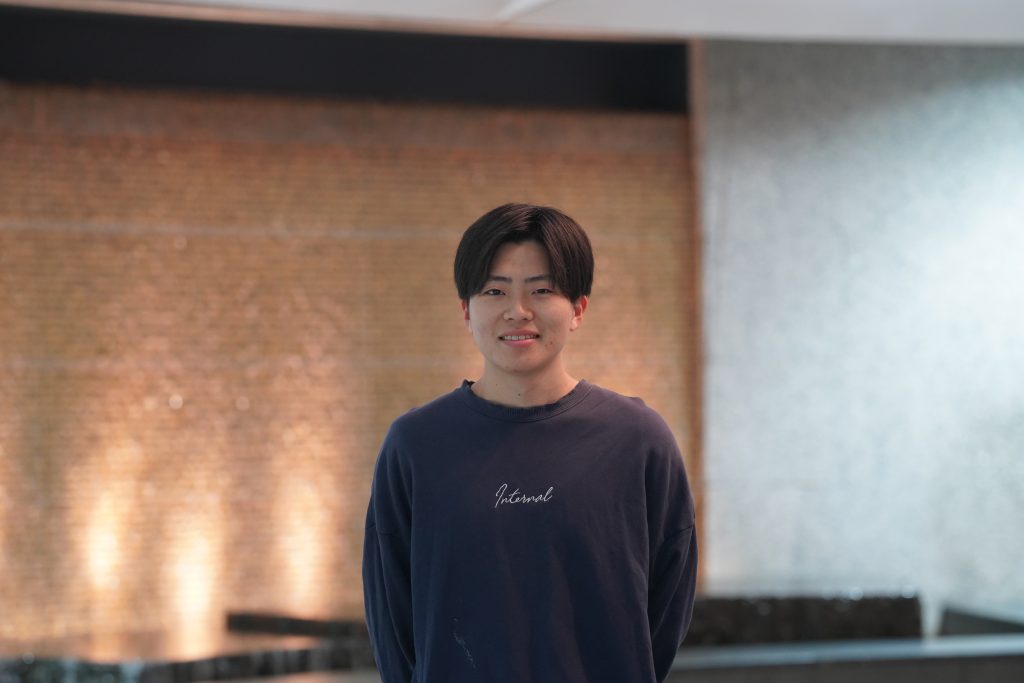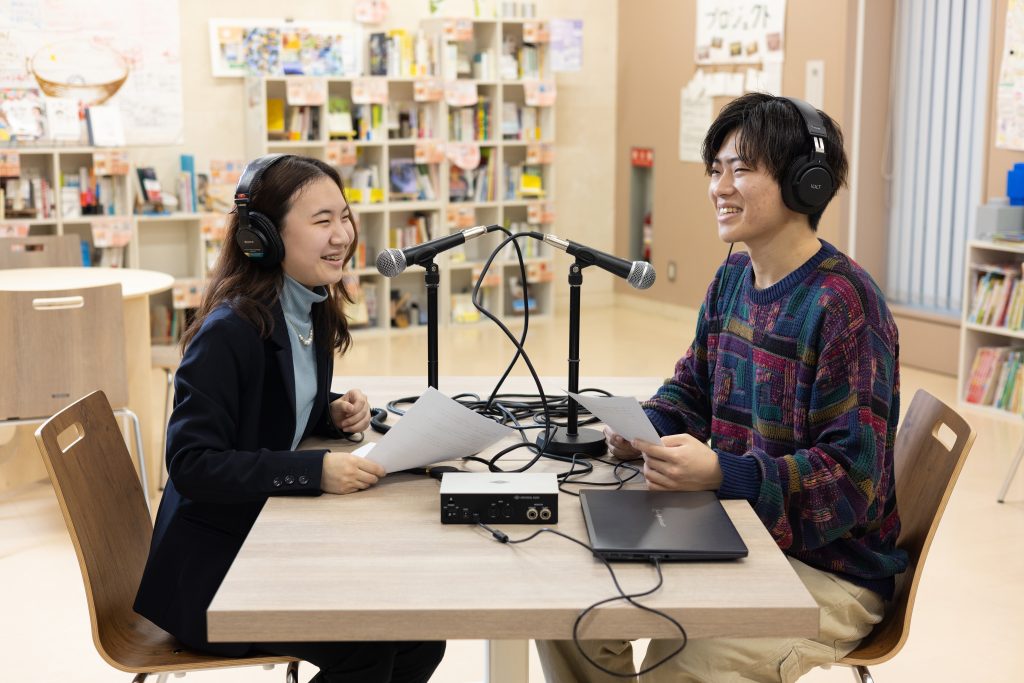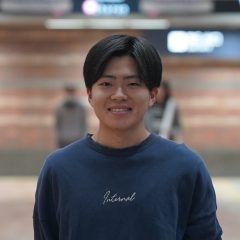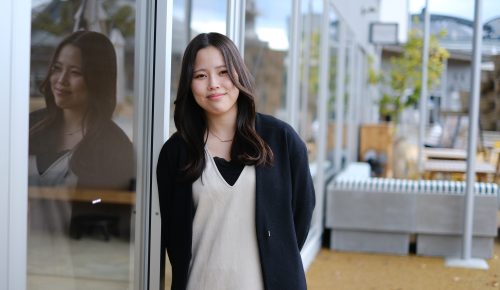
For four consecutive years, Hiroshima has had the highest net outflow of young people among all prefectures in Japan. Rather than focusing solely on keeping youth in Hiroshima, KAWAHARA Sota’s project aims to build a sense of connection for those who leave. In an era where social bonds are often weakened by the dominance of social media, he sees potential in radio—a medium where people share time and connect through voice.
From Overcoming a Weakness to Embracing Radio’s Potential
“Radio is a form of verbal catch ball,” says KAWAHARA. “It helps you organize your thoughts and form deep connections with others.”
Driven by this belief, he founded a student group called Pectures after entering university and began producing podcasts and campus radio broadcasts. “At first, I just wanted to overcome my fear of public speaking, but the more I worked with audio media, the more fascinated I became by its power.”
One of Pectures’ major initiatives is a program called “All Hiroshima Student Radio,” which connects universities in the prefecture through collaborative broadcasts. Another goal was to showcase great workplaces in Hiroshima through interviews with local companies, thereby challenging the region’s youth outflow.
From these experiences, KAWAHARA developed a new vision:
Not just keeping young people in Hiroshima, but creating spaces where they can still feel connected—even if they leave. That idea became the foundation for his current project, “Radio at Shareo,” which he sees as the culmination of his student journey.
菅田 悠生 & 川原 壮太 – 【公式サイト】広島県公立大学法人 叡啓大学 (Japanese Page)

Creating a Public Space for Dialogue and Exchange
The project offers a platform where students lead the conversation and where students, companies, and local communities gather to interact.
More than just a radio program, the project aims to revitalize Hiroshima’s city center by repurposing an unused tenant space at Shareo—a large underground shopping complex in central Hiroshima—into a broadcast booth and community hub.
“I participated in an event hosted by the Hiroshima Urban Core Conference called ‘Pitch & Breast!’, which focused on revitalizing the Kamiyacho Shareo West Street area. After presenting my radio activities, I was offered access to one of the booths,” KAWAHARA explains. “There’s also an open space around the booth, making it a perfect place for diverse people to gather and create social impact.”

Sharing Time, Building Comfort
On February 17, 2025, the project held its kick-off event—an open recording session with over 30 participants from both student and corporate backgrounds.
“We began with a workshop to explore what makes a space feel welcoming and comfortable. Participants shared ideas in small groups, clustered their thoughts, and presented their findings. These insights were reflected in the second radio episode to better shape the space as a platform for exchange and dialogue.”
The team plans to continue monthly broadcasts with diverse content and ultimately hopes to achieve live streaming in the future.
Driven by a Personal Vision
What led to the creation of this project?
“When I asked myself what I truly wanted to do, I thought about Hiroshima’s youth outflow issue—which I’d heard about constantly in the news,” says KAWAHARA. “Despite being discussed for years, no significant progress had been made. I felt compelled to do something about it.”
He identified two key elements for addressing the issue: (1) Fostering meaningful human connections, (2) Creating mechanisms that attract people from outside the prefecture.
He then realized that his radio activities could serve as the method to achieve these goals. The project design closely mirrors the Needs Statement method taught in the university’s Project-Based Learning (PBL) course. He also gained valuable insight from the president of Yokoyama Seimitsu Co., Ltd., whom he met during an internship. “Through that connection, I received practical advice on systems thinking and project management from someone in the field,” he shares.
In an Age of Information Overload, Radio is Being Reimagined
KAWAHARA’s activities have caught the attention of Hiroshima FM and Fukuyama FM, leading to guest appearances and collaborative broadcasts.
“I don’t overthink it—I just focus on enjoying the process and following what excites me,” he says. “Of course, that’s easier said than done, but the open, flexible environment at Eikei University of Hiroshima has helped me act quickly on my ideas. I’ve learned how to write proposals, move things into action, and evaluate those actions constructively.”
He adds, “People have started telling me they want our generation to keep pushing boundaries and change Japan’s stagnant mindset. That motivates me to keep moving forward.”
The “Radio at Shareo” project still has many ideas waiting to be realized, and KAWAHARA’s field of activity continues to expand—step by step.


▼Partner Company Introduction
●Yokoyama Seimitsu Co., Ltd.
5-8-54 Nagatsuka, Asaminami-ku, Hiroshima City
With over 150 years of history, this Hiroshima-based company supports manufacturing by transforming ideas into tangible products and services. They specialize in designing systems, creating new communities that transcend existing resources, and producing value-added solutions.



